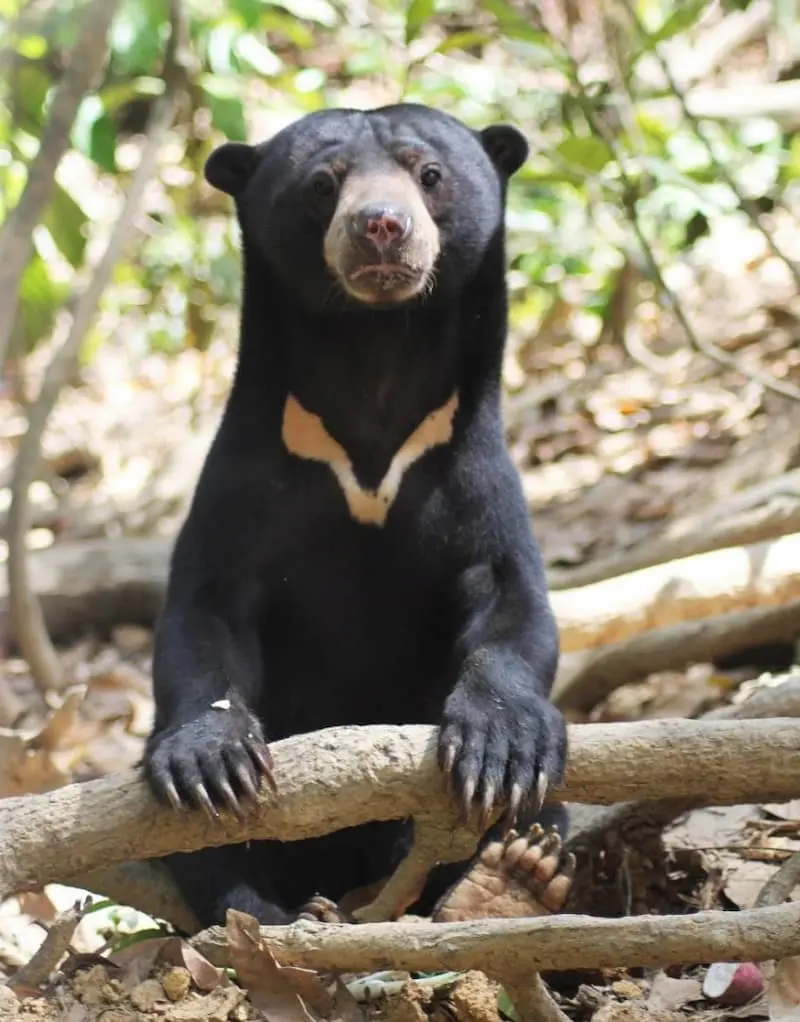MALAYAN SUN BEAR

KEY FACTS Population Trend: Decreasing ↓
IUCN Status: Vulnerable
Wild population estimates: Unknown
Scientific name: Helarctos malayanus
Size: upto 1.5m long
Found in: Peninsular Malaysia and East Malaysia.
Habitat: Tropical forest, shrublands, artificial/terrestrial
Diet: Fruits, nuts, berries, insects, honey
Average number of cubs: one
Average Life-expectancy in the wild: up to 25 years
DESCRIPTION
The Malayan sun bear, or the sun bear, is the smallest member of the bear family. They are easily distinguishable by their bib-shaped golden or white patch on their chest. These adorable bears are the least studied of all 8 existing bear species. Maybe this is due to their shy nature and the type of habitat they reside in – remote, dense, lowland forests of Southeast Asia.
Sun bears are primarily nocturnal, but daytime activity has been observed in this species. Usually, they scour the forest looking for berries, figs, other varieties of fruits, and insects—especially beetles, termites, and ants. Even so, it’s high up in the trees that they excel, using their long, curved claws for climbing with ease and speed and a long, slender tongue for extracting honey from bee nests. Hence, their nickname is “honey bear”. Like many other species, the sun bear currently faces multiple threats on a regional and national level: habitat loss, population fragmentation, illegal hunting, and trading for traditional medicine and delicacies.
For further reading, check out the pioneers of sun bear conservation in Sabah and explore the challenges facing Malaysia’s endangered wildlife.






